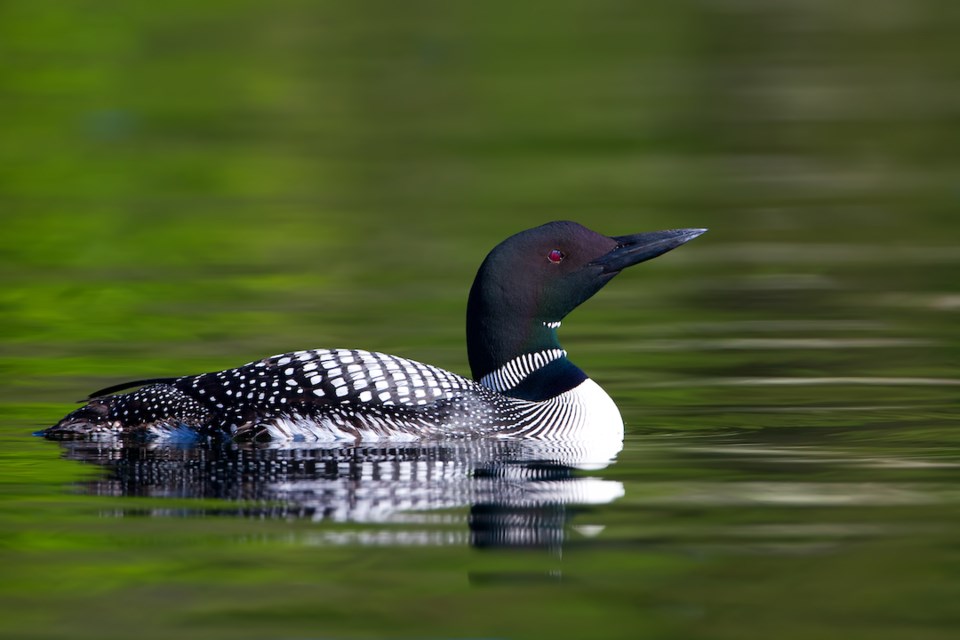Loons are an iconic species, familiar to most people and often thought of as synonymous with the Canadian wilderness. Again, most people are familiar with the call of the loon, a wild, unrestrained yodel from which the common loon takes its name. In the national consciousness the common loon is frequently thought of as Canada’s national bird but the Canada jay has actually been proposed for that status by the Canadian Geographical Society. In the U.K. loons are known as divers, thus the common loon is known as the great northern diver.
There are five species of loons worldwide, four of which regularly occur in both North America and B.C. The fifth species, Arctic loon, is a rarity in North America and B.C. The other four species in descending order of abundance on the Sunshine Coast are common loon, Pacific loon, red-throated loon and yellow-billed loon.
Common loon is the species best known on the Sunshine Coast and can be observed close inshore on salt water all along our Coast in the fall, winter and spring. The Salish Sea is a winter haven for loons from interior areas where the lakes freeze over. There is a small breeding population of loons on the Sunshine Coast, with regular nesting on the woodland lakes of the Pender Harbour area. Thus, loon parents and their young can be observed on Garden Bay, McNeill, Lily, Mixal, Ambrose, North and Klein lakes, etc. A frequent sight is the loon chicks hitching a ride on the backs of the adult birds. Chicks and eggs are prone to predation by eagles, mink, coyotes, etc.
Pacific loons are smaller and less bulky than common loons and are distinguished by an ashy-coloured head. They are seen here in fall, winter and spring but not in summer as they breed north of 60. They are regular in winter, usually in small flocks. However, during both spring and fall migration, they can occur in huge numbers. The record number was on May 11, 2016 when Russ Tkachuk observed an estimated 11,000 birds 2-3 kms offshore from Roberts Creek to White Islets. Russ reported the birds were in five to six groups with about half in one flock. There are other reports of flocks up to 2,500 birds in May.
Red-throated loons are the smallest and most delicate of the loons and occur in fall, winter and spring. They are the least common of the three regular species and are usually seen singly but do occur in small flocks, with the largest flock being twelve birds. The fourth species, yellow-billed loon, is a rare winter visitor to our shores from its Arctic breeding grounds. It looks like a common loon but is slightly larger with an upward pointing bill. It averages about one record per year in our area.
On April 14, 2016 John Hodges achieved the notable feat of observing all four loon species in one session from the Roberts Creek jetty.
To report your sightings or questions contact me at [email protected] or 604-885-5539. Good Birding.





